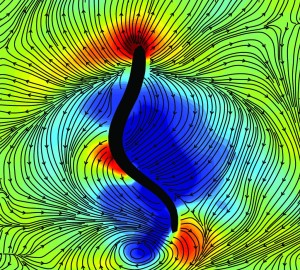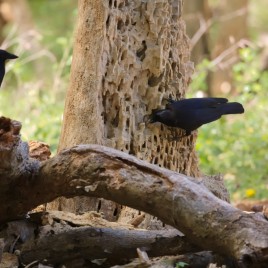
Snapshot of a lamprey eel (black outline) swimming in a water tank. The red regions represent high-pressure pushing forces and the blue regions represent low-pressure suction forces. (Image credit: John O. Dabiri)
Jellyfish and lamprey eels have some of the lowest energy costs for swimming of any animal, and now scientists have figured out how they do it. Fish, humans, and boats move forward by propelling water backwards thereby generating thrust. Jellyfish and eels however are able to generate low pressure regions that help pull them through the water.
The researchers hope to use this technique to design more efficient underwater vehicles.
The study tracked the movement of eels and jellyfish by adding microscopic glass beads to the water around jellyfish and eels.
Original research paper published in Nature on November 3, 2015.
Names and affiliations of selected author

